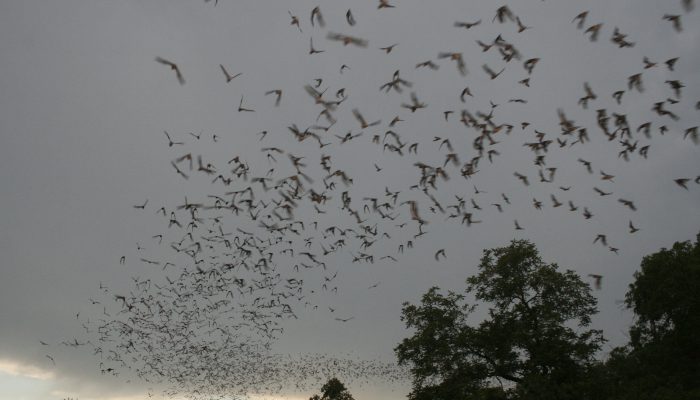Beyond the Edge: Biodiversity Outside the Forest
Forests are places where you can amaze yourself with the incredible biodiversity. However, what happens outside the forest? This is a question of real concern in the Antropocene Era, the time period dominated by humans, when land cover conversions happen at incredible speed.
Studying diversity in the Peruvian Amazon, a biodiversity hotspot that is facing a high rate of deforestation, allowed me the opportunity to witness how non-forest areas, transformed into different land use types, maintain and lose species.
To evaluate how these changes in land cover affect the composition of species, I selected bats as my model group. The abundance of bats and the ecological roles they play in the ecosystem, make them useful indicators of changes in their surroundings. Since they are flying mammals, capturing them in a specific site using mist-nets does not mean they are actually using the resources in the area. However, their presence might suggest that the area is providing them some type of cover, serving as flying paths or corridors, or supplying them with food resources.
My team and I sampled three different habitats (forest interior, forest edge and production land) in areas that have two different agricultural land use types: papaya plantations and cattle pasture. After more than six months collecting data in 2016, patterns of diversity reveal that bats are using both papaya plantations and pastureland.
In the cattle pasture sites, the number of bat species are similar at all three habitats (forest interior, forest edge and pasture). However, in the papaya plantation sites, richness is higher at the forested habitats (interior and edges) than at the papaya plantation itself. When accounting for the amount of bats captured, we find that forested habitats at both site categories are similar. Nevertheless, the number of captures at papaya plantations exceeds the number of captures at cattle pasture habitats. The frugivorous bat Artibeus planirostris is driving this difference due to its high abundance in the papaya plantations than in any other habitat. We found evidence that A. planirostris and other five species of frugivorous bats are feeding on papaya (remains of papaya on the individuals mouths as well as the presence of papaya in feces).
At the different habitats sampled, we found bats from the family Phyllostomidae that belong to diet-based groups or trophic guilds. The carnivorous species, Chrotopterus auritus, are found just at the forest interior. On the other hand, gleaning insectivores, most of which are considered as sensitive species to perturbations, are completely absent in pastureland. Ironically, the vampire bat Desmodus rotundus is only absent in pastureland where cattle, one of their principal food sources in disturbed areas, are present (Figure 1).
With this work, we show that some species are found in the whole landscape, while other species and entire trophic guilds are absent as the habitat becomes more different from the forest.

Figure 1. Species from different trophic guild present in the habitats sampled across study sites. Nec = nectarivores, Omn = Omnivores, Insec = insectivores, Carn = carnivores, Sang = sanguivores. Source: Carrasco, in preparation.


